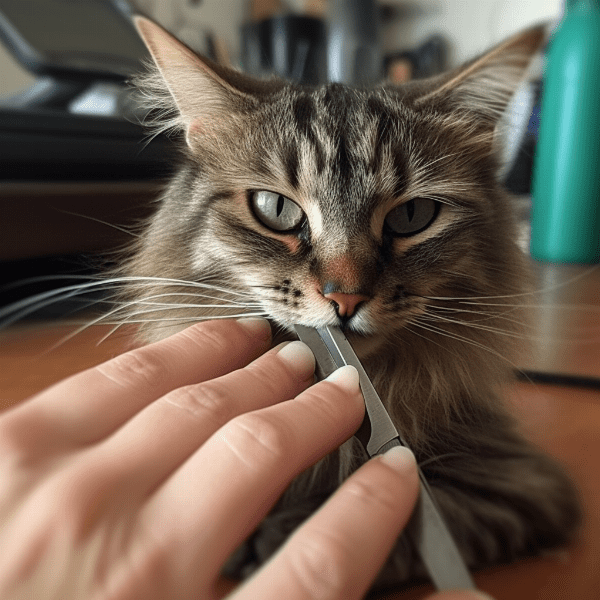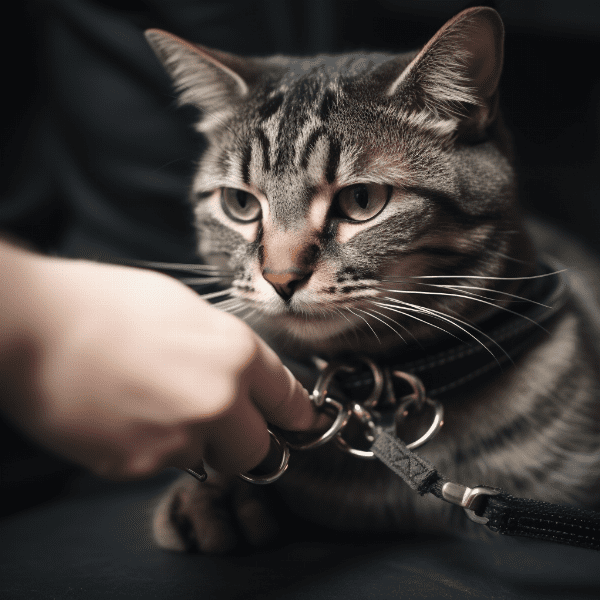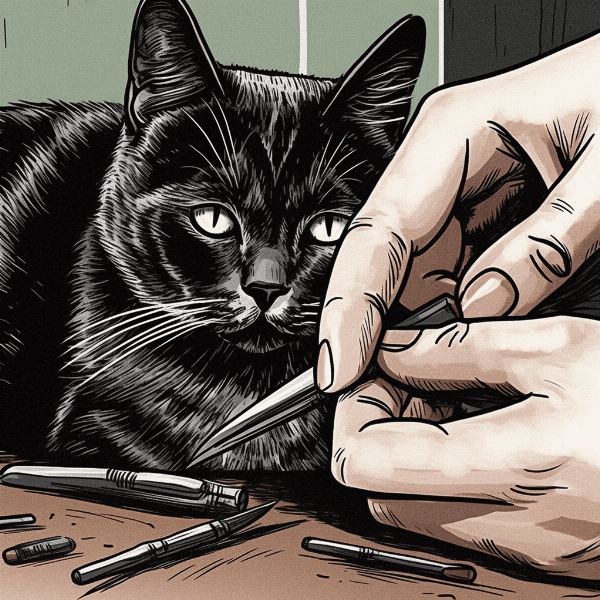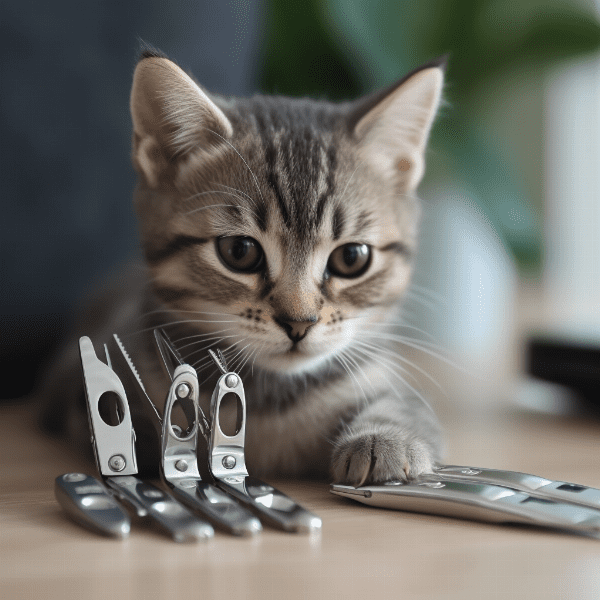Table of Contents
- The Importance of Cat Nail Trimming
- Choosing the Right Tools for Cat Nail Trimming
- Preparing Your Cat for Nail Trimming
- Step-by-Step Guide to Cat Nail Trimming
- Dealing with Difficult Cats During Nail Trimming
- Common Mistakes to Avoid When Trimming Cat Nails
- Post-Trimming Care for Your Cat’s Nails
- How Often Should You Trim Your Cat’s Nails?
- Alternatives to DIY Cat Nail Trimming
- When to Seek Professional Help for Cat Nail Trimming
The Importance of Cat Nail Trimming
Trimming your cat’s nails regularly is an essential part of their grooming routine. It not only prevents your furniture and carpets from being scratched, but it also helps to maintain your cat’s overall health and well-being.
Preventing Overgrowth and Breakage
Cat’s nails grow continuously, and if they are not trimmed, they can become overgrown and start to curl, which can cause discomfort or pain when walking or jumping. Overgrown nails can also break easily, which can be painful for your cat and may result in bleeding.
Maintaining Good Hygiene
Cats are prone to accumulating dirt and debris under their nails, which can cause infections if not cleaned properly. Regular nail trimming helps to keep your cat’s paws clean and reduces the risk of infection.
Reducing the Risk of Scratches
Scratches from your cat’s nails can be painful, and if not treated properly, they can lead to infection. Regular nail trimming helps to reduce the risk of accidental scratches and keeps your cat’s nails smooth and blunt.
Promoting Positive Behavior
Cats can be sensitive to touch, and if they have long, sharp nails, they may become aggressive or fearful when you try to handle them. By keeping their nails trimmed, you can make handling and grooming more comfortable for your cat, promoting positive behavior and bonding.
Saving on Veterinary Bills
If your cat’s nails are not regularly trimmed, they can grow into their paw pads, causing pain, infection, or even lameness. In severe cases, surgery may be required to correct the problem, which can be costly. Regular nail trimming can save you from unnecessary veterinary bills and keep your cat healthy and happy.
In conclusion, Cat nail trimming is an important aspect of your cat’s grooming routine. It not only maintains your cat’s hygiene and reduces the risk of scratches, but it also promotes positive behavior, saves you money on veterinary bills, and keeps your cat healthy and happy.

Choosing the Right Tools for Cat Nail Trimming
Choosing the right tools for cat nail trimming is essential to ensure a safe and comfortable experience for both you and your cat. Here are some factors to consider when selecting the tools for your cat’s nail trimming:
Size and Shape of the Nail Clippers
The size and shape of the nail clippers play an important role in determining the ease and precision of the nail trimming process. Choose clippers that are specifically designed for cat nails, as they are smaller and easier to maneuver. Look for clippers with a comfortable grip that fit your hand well, making the process more comfortable for you as well.
Choosing Between Scissors and Guillotine Clippers
There are two main types of cat nail clippers: scissors and guillotine clippers. Scissor clippers work like a pair of scissors, while guillotine clippers have a hole where the nail is placed and a blade that cuts through the hole. Both types are effective, but choosing one over the other depends on your preference and your cat’s comfort.
Quality of the Clippers
Investing in a good-quality pair of clippers is important for the safety and comfort of your cat. Cheap, low-quality clippers may cause the nail to split or break, causing discomfort to your cat. High-quality clippers may cost more, but they are durable and provide a clean, precise cut, reducing the risk of injury or discomfort.
Other Tools to Consider
In addition to nail clippers, other tools can also be useful in the nail trimming process. A styptic powder or pencil can be used to stop bleeding in case of accidental cuts. A nail file can be used to smooth out rough edges after trimming. It is also helpful to have treats or toys on hand to reward your cat for good behavior during the process.
In conclusion, choosing the right tools for cat nail trimming is important to ensure a safe and comfortable experience for both you and your cat. Consider factors such as the size and shape of the clippers, the type of clippers, and the quality of the clippers when selecting your tools. Additionally, other tools such as styptic powder, nail files, and treats or toys can also be useful in the process.
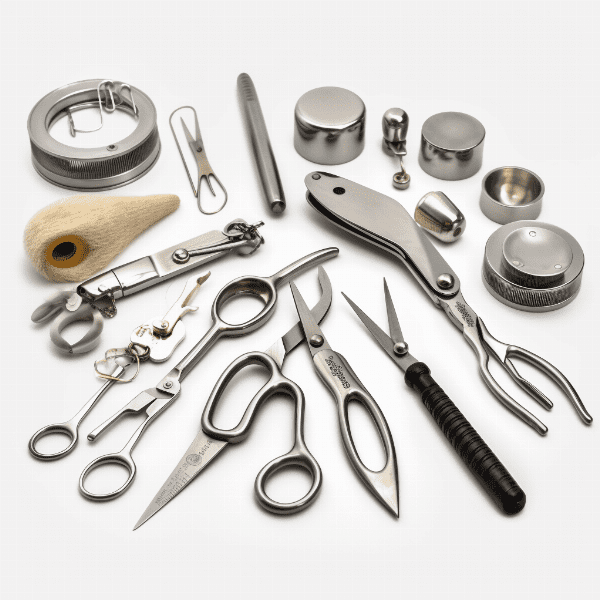
Preparing Your Cat for Nail Trimming
Preparing your cat for nail trimming is an important step in ensuring a safe and comfortable experience for both you and your furry friend. Here are some tips to help you prepare your cat for nail trimming:
Familiarize Your Cat with the Process
Introduce your cat to the nail trimming process gradually. Start by touching their paws and nails gently, giving them treats and praise as you do so. This will help your cat become accustomed to the sensation and associate it with positive experiences.
Choose the Right Time and Place
Choose a quiet and comfortable place to trim your cat’s nails. Avoid trimming their nails when they are agitated or after a meal, as they may be less cooperative. Instead, choose a time when your cat is relaxed and comfortable, such as after a nap.
Be Patient and Take Breaks
If your cat becomes agitated or resistant during the nail trimming process, take a break and resume the process later. It is essential to remain calm and patient, as your cat will sense your anxiety or frustration and become even more agitated.
In conclusion, preparing your cat for nail trimming is an essential step in ensuring a safe and comfortable experience for both you and your furry friend. Introduce your cat to the process gradually, choose the right time and place, use positive reinforcement, restrain your cat gently but firmly, and be patient and take breaks if necessary. With these tips, you can make the nail trimming process a positive and stress-free experience for both you and your cat.

Step-by-Step Guide to Cat Nail Trimming
Trimming your cat’s nails can be a challenging task, but with the right tools and techniques, it can be a stress-free experience for both you and your cat. Here is a step-by-step guide to cat nail trimming:
Step 1: Prepare Your Cat
Before trimming your cat’s nails, make sure they are calm and relaxed. You can try petting and talking to your cat to soothe them. You may also want to use treats or toys to keep them distracted during the process.
Step 2: Restrain Your Cat
Restrain your cat gently but firmly. You can wrap them in a towel or blanket, leaving only the paw you are working on exposed. Alternatively, you can use a cat grooming bag, which is designed to restrain cats during grooming sessions.
Step 3: Position the Clippers
Position the clippers perpendicular to the nail, about 2mm away from the quick. The quick is the pink part of the nail that contains blood vessels and nerves, so be careful not to cut into it, as it can cause bleeding and pain.
Step 4: Make the Cut
Make a swift, clean cut with the clippers. Avoid crushing or squeezing the nail, as this can cause discomfort to your cat. If you accidentally cut into the quick, apply styptic powder or pencil to stop the bleeding.
Step 5: Repeat the Process
Repeat the process for each nail, taking breaks if necessary. Remember to reward your cat with treats or praise throughout the process to keep them calm and cooperative.
Step 6: Smooth the Edges
In conclusion, trimming your cat’s nails may seem daunting, but with the right tools and techniques, it can be a stress-free experience for both you and your furry friend. Follow these steps to trim your cat’s nails safely and effectively, and don’t forget to reward them with treats or praise throughout the process.
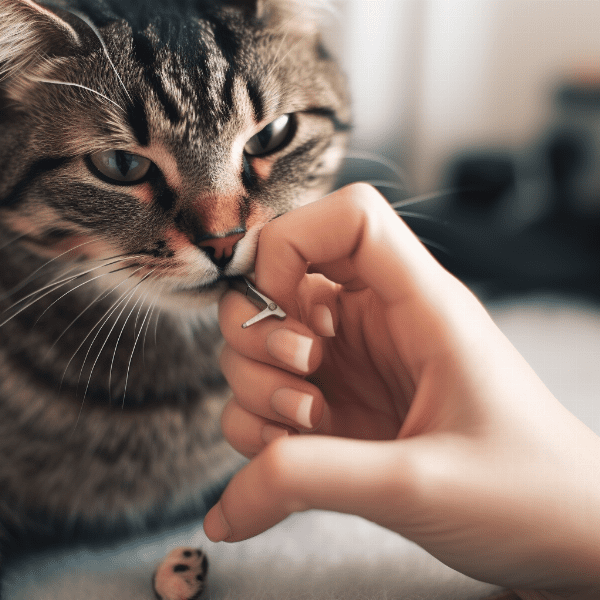
Dealing with Difficult Cats During Nail Trimming
Trimming your cat’s nails can be a challenging task, especially if your cat is uncooperative or difficult to handle. Here are some tips for dealing with difficult cats during nail trimming:
Be Patient
Patience is key when dealing with difficult cats during nail trimming. It may take several attempts before your cat becomes comfortable with the process, so don’t give up or become frustrated. Stay calm and patient, and take breaks if necessary.
Use Distractions
Distractions can be useful in keeping your cat calm and cooperative during nail trimming. You can try using treats or toys to keep them distracted while you trim their nails. Alternatively, you can try playing calming music or using pheromone sprays to reduce their anxiety.
Use Positive Reinforcement
Positive reinforcement is an effective way to encourage good behavior during nail trimming. Reward your cat with treats or praise throughout the process to keep them calm and cooperative. This will help them associate the experience with positive experiences, making future nail trimming sessions easier.
Seek Professional Help
If your cat is uncooperative or difficult to handle during nail trimming, it may be best to seek professional help. A veterinarian or professional groomer can trim your cat’s nails safely and effectively, using specialized equipment and techniques.
Consider Alternatives
If your cat is consistently uncooperative or difficult to handle during nail trimming, consider alternative options such as using nail caps or seeking other grooming methods. Nail caps are a safe and effective way to protect your furniture and carpets from scratching, and they do not require nail trimming.
In conclusion, dealing with difficult cats during nail trimming can be a challenge, but with patience, distractions, and positive reinforcement, it can be a stress-free experience for both you and your furry friend. If necessary, seek professional help or consider alternative options such as nail caps. Remember to stay calm and patient, and reward your cat for good behavior during the process.
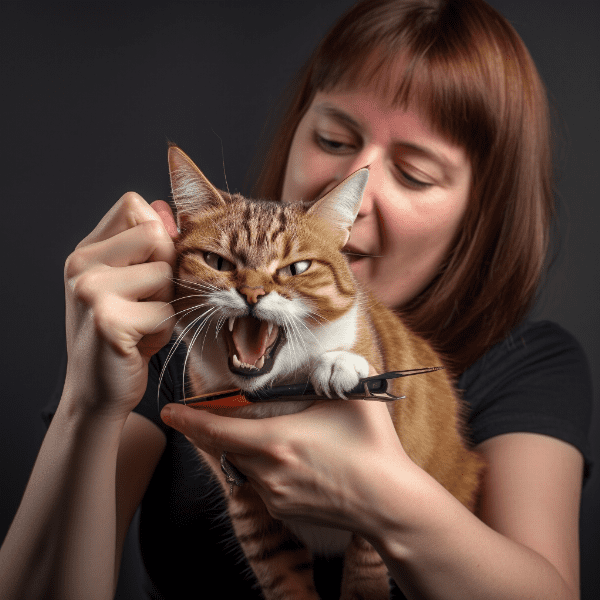
Common Mistakes to Avoid When Trimming Cat Nails
Trimming your cat’s nails may seem like a simple task, but it can be easy to make mistakes that can cause discomfort or injury to your cat. Here are some common mistakes to avoid when trimming cat nails:
Mistake 1: Cutting the Quick
One of the most common mistakes when trimming cat nails is cutting the quick, which can cause bleeding and pain. Be sure to position the clippers perpendicular to the nail, about 2mm away from the quick. If you accidentally cut into the quick, apply styptic powder or pencil to stop the bleeding.
Mistake 2: Using Dull Clippers
Using dull clippers can crush or split the nail, causing discomfort or injury to your cat. Make sure to use sharp, high-quality clippers that provide a clean, precise cut. Replace the clippers when they become dull or worn out.
Mistake 3: Trimming Too Much
Trimming too much of the nail can cause discomfort or pain to your cat, and it can also increase the risk of cutting the quick. Trim only the tip of the nail, leaving about 2mm of the nail remaining from the quick.
Mistake 4: Trimming Too Infrequently
Infrequent nail trimming can cause the nails to become overgrown and start to curl, which can be uncomfortable or painful for your cat. Trim your cat’s nails every 2-3 weeks to maintain a healthy nail length.
Mistake 5: Neglecting Post-Trimming Care
After trimming your cat’s nails, it is important to smooth out any rough edges with a nail file. Neglecting this step can cause your cat to accidentally scratch themselves or your furniture.
In conclusion, trimming your cat’s nails may seem like a simple task, but it is important to avoid common mistakes that can cause discomfort or injury to your cat. Avoid cutting the quick, use sharp clippers, trim only the tip of the nail, trim regularly, and smooth out any rough edges after trimming. With these tips, you can ensure a safe and comfortable nail trimming experience for your furry friend.
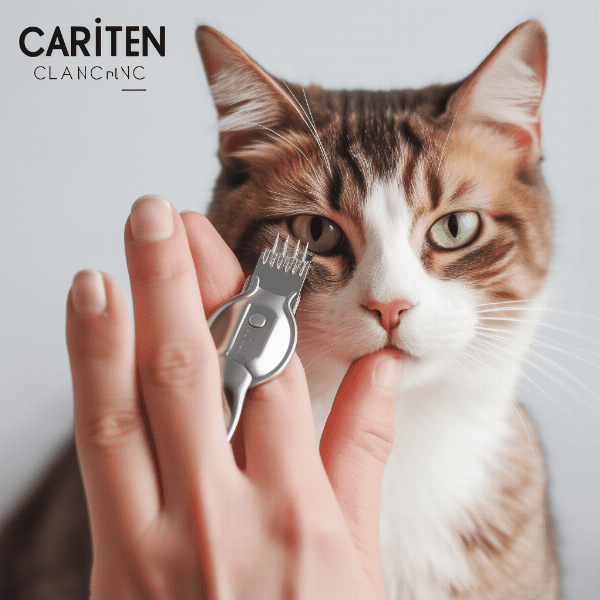
Post-Trimming Care for Your Cat’s Nails
After trimming your cat’s nails, it is important to take proper care of their paws to ensure their continued health and well-being. Here are some tips for post-trimming care for your cat’s nails:
Check for Bleeding
Check your cat’s nails for any bleeding or signs of discomfort after trimming. If you accidentally cut into the quick, apply styptic powder or pencil to stop the bleeding.
Smooth out Rough Edges
Smooth out any rough edges on your cat’s nails using a nail file. This will prevent your cat from accidentally scratching themselves or your furniture.
Reward Your Cat
Reward your cat with treats or praise after trimming their nails to encourage good behavior and positive associations with the experience.
Inspect Your Cat’s Paws Regularly
Regularly inspect your cat’s paws for signs of infection or discomfort. Look for redness, swelling, or discharge, which may be signs of an infection or injury.
Consider Regular Grooming
Regular grooming can help to maintain your cat’s overall health and well-being. Consider incorporating nail trimming into your cat’s regular grooming routine, along with brushing and bathing.
In conclusion, post-trimming care for your cat’s nails is an important aspect of maintaining their overall health and well-being. Check for bleeding, smooth out rough edges, reward your cat, inspect their paws regularly, and consider regular grooming. With proper care, your cat’s nails will remain healthy and comfortable, and your furniture and carpets will be safe from scratching.

How Often Should You Trim Your Cat’s Nails?
Trimming your cat’s nails is an essential part of maintaining their overall health and well-being, but how often should you do it? Here are some factors to consider when determining how often to trim your cat’s nails:
Age
Younger cats tend to be more active and may require more frequent nail trimming than older cats. Kittens may need their nails trimmed as often as once a week, while adult cats may only need their nails trimmed every 2-3 weeks.
Lifestyle
Indoor cats may require less frequent nail trimming than outdoor cats, as they do not use their nails as much for climbing or hunting. Cats that scratch a lot may also require more frequent nail trimming than cats that do not scratch as much.
Nail Growth
Cats’ nails grow at different rates, so it is important to monitor your cat’s nail growth and trim them when necessary. If your cat’s nails start to curl or grow into their paw pads, it is time for a trim.
Comfort Level
If your cat becomes uncomfortable or agitated during nail trimming, it may be best to trim their nails more frequently, in shorter sessions. This will help them become more comfortable with the process over time.
In general, it is recommended to trim your cat’s nails every 2-3 weeks to maintain a healthy nail length. However, every cat is different, and factors such as age, lifestyle, nail growth, and comfort level should be taken into consideration when determining how often to trim your cat’s nails.
In conclusion, trimming your cat’s nails is an essential part of their overall health and well-being. Monitor your cat’s nail growth and trim them every 2-3 weeks, or as needed based on their age, lifestyle, and comfort level. With regular nail trimming, your cat’s paws will remain healthy and comfortable, and your furniture and carpets will be safe from scratching.
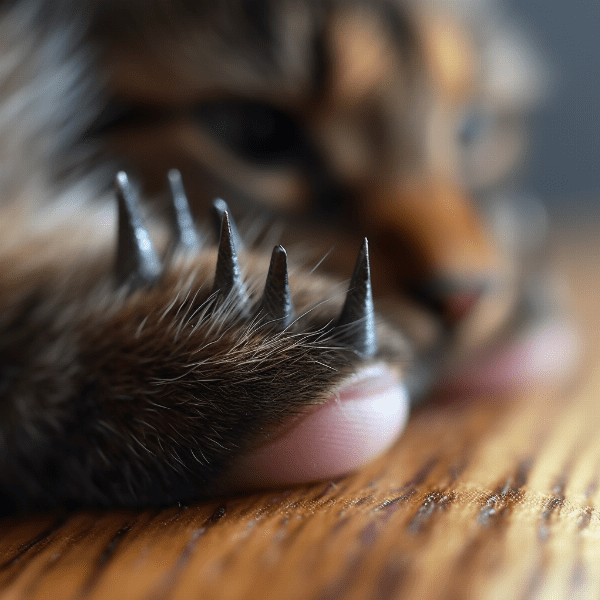
Alternatives to DIY Cat Nail Trimming
While trimming your cat’s nails at home can be a cost-effective and convenient option, it may not be suitable for all cats or pet owners. Here are some alternatives to DIY cat nail trimming:
Professional Grooming
Professional grooming services, such as veterinary clinics or pet salons, offer nail trimming services for cats. Trained professionals can safely and effectively trim your cat’s nails using specialized equipment and techniques. This is a good option for cats that are uncooperative or difficult to handle during nail trimming.
Nail Caps
Nail caps are a safe and effective alternative to nail trimming. They are small, plastic caps that fit over your cat’s nails and prevent them from scratching surfaces or people. Nail caps are easy to apply and can last for several weeks. They do not require any nail trimming, making them a great option for cats that are resistant to nail trimming.
Scratching Posts and Pads
Providing your cat with scratching posts and pads can help to keep their nails healthy and prevent overgrowth. Scratching posts and pads are designed to mimic the texture of tree bark or carpet, encouraging your cat to scratch and shed their nails naturally. This can be a great option for cats that do not like to have their nails trimmed or are resistant to nail caps.
In conclusion, DIY cat nail trimming may not be suitable for all cats or pet owners. Professional grooming, nail caps, and scratching posts and pads are safe and effective alternatives to DIY nail trimming. Consider these options to maintain your cat’s nail health and prevent damage to your furniture and carpets.
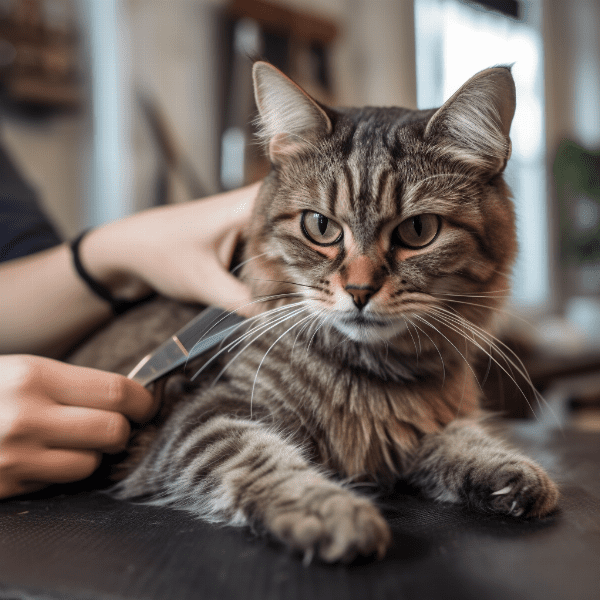
When to Seek Professional Help for Cat Nail Trimming
While DIY cat nail trimming can be a cost-effective and convenient option, there are times when it may be necessary to seek professional help. Here are some situations when you should consider seeking professional help for cat nail trimming:
Uncooperative or Aggressive Cat
If your cat is uncooperative or aggressive during nail trimming, it may be best to seek professional help. Trained professionals can safely and effectively restrain and trim your cat’s nails, reducing the risk of injury to both you and your cat.
Thick or Overgrown Nails
If your cat’s nails are thick or overgrown, it can be difficult to trim them properly without causing discomfort or injury. Professional groomers or veterinarians have the necessary tools and techniques to trim thick or overgrown nails safely and effectively.
Medical Conditions
Certain medical conditions, such as arthritis or diabetes, can make nail trimming difficult or uncomfortable for your cat. Professional groomers or veterinarians can safely trim your cat’s nails while taking into account their medical conditions and any necessary precautions.
Inexperience or Lack of Confidence
If you are inexperienced or lack confidence in trimming your cat’s nails, it may be best to seek professional help. Trained professionals can provide guidance and support, ensuring that the nail trimming process is safe and stress-free for both you and your cat.
In conclusion, while DIY cat nail trimming can be a cost-effective and convenient option, there are situations when it may be necessary to seek professional help. If your cat is uncooperative or aggressive, if their nails are thick or overgrown, if they have medical conditions, or if you lack experience or confidence in trimming their nails, consider seeking professional help. This will ensure that your cat’s nails are trimmed safely and effectively, and that they remain healthy and comfortable.
